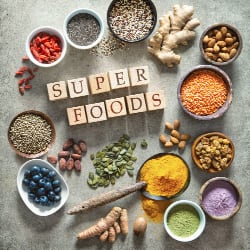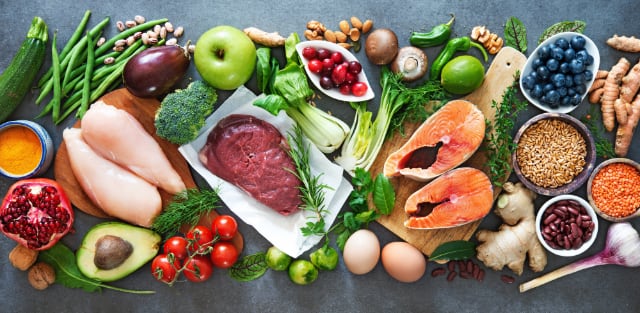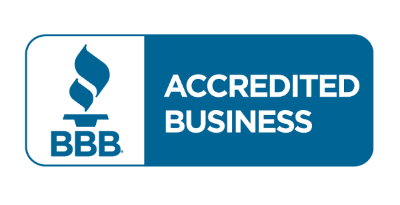
Adding Superfoods to Your Diet
Cooking Detoxification Support Nutrition
We have all heard of the term superfoods. But what does it mean? What are these foods that supposedly have numerous health benefits? How much of these foods should we be eating, and are they beneficial?

Adding Superfoods to Your Diet
Cooking Detoxification Support Nutrition
We have all heard of the term superfoods. But what does it mean? What are these foods that supposedly have numerous health benefits? How much of these foods should we be eating, and are they beneficial?
Did you know that fiber is one of the most important nutrients found in many superfoods? Only 5% of Americans currently eat enough fiber. It shouldn't be so hard to add fiber to our diets. However, lack of knowledge and the ease of nutritionally void convenience food make it difficult for us to maintain a rich, varied and nutritious diet.
Approximately 90% of Americans also don't eat enough fruits and vegetables. Is it that hard to add more nutritious ingredients to our meals? If you aren't sure how to, then our guide to superfoods will have you up to your intake of vital nutrients in no time! Keep reading to find out how.

What Are Superfoods?
The term superfoods refer to foods that we know to be dense in nutrients. They are foods that contain high levels of antioxidants, vitamins, and minerals that our bodies need to stay healthy.
There is no specific requirement for a food to be labeled a superfood; it is not an official term. The term is more a marketing term used to talk about nutritionally abundant foods.
Superfoods are often touted as the solution to maintaining a healthy lifestyle and warding off diseases. It is important to remember that regularly eating one food will not improve your health and stop you from getting sick.
To sustain long-term health, you need to eat a variety of nutritiously dense foods.
Which Superfoods Can You Add To Your Diet?
As mentioned, there are hundreds of foods that can be called superfoods. Due to a lack of criteria to categorize food as 'super,' it can be hard to know which foods are worth adding to your diet.
Let's take a look at some of the most popular and accessible superfoods' nutritional value and how you can add them to your diet.
Oats
A powerhouse of nutrients, oats are a classic way to add more fiber and nutrients into your diet. Oats contain soluble fiber, which can help to lower your body's levels of bad cholesterol. Fiber is excellent for your heart health and digestive system and can even help with weight loss.
Oats are whole grain and can help to stabilize your blood sugar. If you eat them for breakfast, they keep you full and stop you from snacking on unhealthy snacks!
How to Easily Add Oats to Your Diet
Eat them as muesli for breakfast, warm them up like porridge, add them to a morning smoothie. You can roast them in the oven to make baked oats; you can put them in the fridge with milk overnight, and they turn into a pudding-like consistency.
Adding oats to your diet is one of the most straightforward changes you can make towards a healthy lifestyle. If you can get into the habit of having oats every day, you will soon notice the difference in your health and wellbeing!
Greens
We all know we should be eating our greens. Foods such as broccoli and spinach are rich in phytochemicals - the naturally occurring chemical gives the veggies thier rich color. Phyto means plants, and these compounds are thought to protect our cells from damage when we consume them.
Green vegetables are also rich in iron and vitamin K. Iron is integral for our bodies to grow and develop. Our bodies also use iron to make the protein hemoglobin. Our red blood cells use hemoglobin to carry oxygen to all body parts.
Vitamin K is essential for maintaining healthy blood vessels and for blood clotting.
How Do You Add Greens to Your Diet?
Try to have a side of vegetables with every meal-roast broccoli or green beans with your favorite herb or spice to make it taste good. Sesame broccoli is delicious, for example, as is broccoli or green beans with peanut sauce.
You can try adding spinach to your breakfast, with eggs and wholegrain bread. That's a delicious and nutritionally balanced breakfast for you right there.
If you prefer, try adding greens such as kale or spinach to a salad or smoothie. If you don't like the taste of greens so much, mixing it and blending it with other ingredients will make you forget you're even eating it!
Nuts and Seeds
One of the most nutritional foods many of us are missing from our diet is nuts and seeds.
They are full of polyunsaturated and monounsaturated fats. We need these fats, along with the omega three and omega 6 in nuts and seeds, for cell growth and brain function.
Polyunsaturated fats can help reduce your LDL (bad) cholesterol and lower your heart disease risk. We need these fats in our bodies as part of a balanced diet. Remember that nuts are very high in calories, so try not to overindulge in them even though they are healthy!
Seeds such as chia seeds are a great source of protein, as well as omegas.
How to Easily Add Nuts and Seeds to Your Diet
Carry them with you as a snack. Whenever you are peckish, you can snack on them rather than buying something sugary and processed, such as a chocolate bar.
It is easy to sprinkle a few nuts and seeds on your sandwich, in your salad, or on top of a soup. You can also add them to a smoothie or put them on top of your oatmeal in the morning.
Salmon
Oily fish is an essential addition to a balanced diet as it has high levels of omegas. These are essential for our eye health and heart health, amongst other things.
Salmon is low fat and protein-rich, making it perfect for those trying to make conscious changes to healthier, lower-fat protein sources.
How to Add Salmon to Your Diet
Salmon tastes delicious from the grill with a squeeze of lemon and pepper. You could also add it to a salad, have it in a rice dish or with eggs.
Berries
Berries are known for having antioxidant properties and often appear on lists of 'the top superfoods.'
Blueberries, strawberries, raspberries all have high vitamin C levels. They are great for heart health and can reduce stress caused to the cells by free radicals in our environment.
Simple Ways to Add Berries to Your Diet
Instead of snacking on chocolate or cakes, try to snack on berries to get that sugar fix. Berries make a delicious addition to a breakfast smoothie or as a topping for yogurt.
The great thing about berries is that you don't need to do anything to prepare them! You can eat them as they are. Eating well can be as simple as eating a handful of berries every day.
Sweet Potatoes
Sweet potatoes are another great addition to a healthy diet. More nutritional than a standard potato, they have tons of fiber (something many of us seem to lack), B vitamins, and vitamin C.
Due to the high fiber content in sweet potatoes, eating them makes you feel fuller for longer and less likely to crave junk food.
One of the reasons sweet potatoes have long been hailed as a superfood is the high levels of the anti-oxidant beta-carotene they contain. This is converted to vitamin A by the body. Vitamin A is crucial for healthy skin, the immune system, heart, lung, and kidney health.
Add Sweet Potatoes to Your Diet
To easily add sweet potatoes to your diet, try switching out regular potatoes for sweet potatoes. It is such a versatile vegetable, and you can do so much with it.
Try mashing it, frying it, baking it, putting a sweet potato in salads, blending it in soups, or adding it as a tasty, creamy addition to curries. Did you know you can even use sweet potato to make healthy versions of cakes and brownies?!
Get some inspiration for healthy recipes using superfoods here.
How to Maintain a Healthy Lifestyle
Of course, it is not realistic to assume we can all eat superfoods every day. We have busy lives, and sometimes things get in the way of consistently maintaining a super healthy diet.
The best way to start incorporating superfoods into your diet is by taking it slow. If you begin making small, healthy changes, it won't be long before those choices just become habits.
For example, switch out sugary breakfast cereal for oats in the morning. Make it tasty by adding your favorite toppings; after a week, you will be asking yourself why you never did that before.
You can build up from there. Try to eat vegetables with every meal, even if that's just a bit of salad. It won't be long before you start to see and feel a difference in your wellbeing.
Do you need support with making healthier choices and sticking to them? Try our healthy living education program. The program walks you through making small, positive changes that will impact your life forever.

Jay Todtenbier is an original founder of SupplementRelief.com in 2010 and has operated the business ever since. He is also a tennis instructor and gospel musician. Formerly he spent 25 years in business development, technology and marketing with startups and major corporations having gone through the tech boom in Silicon Valley in the 90s. He became passionate about, and began studying and practicing Wellness as a Lifestyle after experiencing chronic, personal health challenges including depression, auto-immune disorders, and being overweight that impacted his ability to live a healthy, vibrant life. Since then, he has been an advocate for healthier living encouraging others to live better through making small, gradual changes to lifestyle behaviors relating to whole-foods nutrition, stress management, reasonable exercise, proper sleep, and the use of targeted, high-quality supplements.
Learn more about Jay Todtenbier.
-
 Discussion Forum
Questions or Feedback?
Discussion Forum
Questions or Feedback?Ask questions. Share your thoughts. Note that we cannot answer questions relating to specific medical conditions - please refer those to your qualified healthcare provider.
Post a new Comment or Reply to an existing one. Help for using the Discussion Forum.
 Discussion Forum Help
Discussion Forum Help
Comments are displayed in order of the last one posted so the most recent one is at the top and the oldest one at the bottom.
Replies within a Comment are displayed in reverse order with the oldest one at the top and the most recent one at the bottom.
Each post identifies
 who made the post and the
who made the post and the  date and time the post was made.
date and time the post was made.Mouse over the icons for tooltips that explain what they mean.

If you see this icon you can attach an Audio file to your post.

If you see this icon you can attach a Document file to your post.

If you see this icon you can attach an Image file to your post.

If you see this icon you can attach a Video file to your post.
You will see the
 Ban icon (Report Post as SPAM) immediately following the Timestamp of the post. Click this icon if you feel strongly that the content posted is not appropriate and should be reviewed by the Forum Moderator. You will be provided with a confirmation dialog to be sure you wish to submit this post for review. If submitted, the Forum Moderator will be notified to review the post and will determine what type of action to take.
Ban icon (Report Post as SPAM) immediately following the Timestamp of the post. Click this icon if you feel strongly that the content posted is not appropriate and should be reviewed by the Forum Moderator. You will be provided with a confirmation dialog to be sure you wish to submit this post for review. If submitted, the Forum Moderator will be notified to review the post and will determine what type of action to take.Click
 in the upper right corner of this Help modal or anywhere on the web page outside of the modal to exit Help.
in the upper right corner of this Help modal or anywhere on the web page outside of the modal to exit Help.
![]() Session Expired from Inactivity
Session Expired from Inactivity
Do you want to?
9618 Jefferson Highway, Suite D-191
Baton Rouge LA 70809-9636
(888) 424-0032 |
support@supplementrelief.com
* Disclaimer: This page is available exclusively for SupplementRelief.com clients. None of the information on this website is intended to replace your relationship with your healthcare provider(s). Nothing should be considered medical advice. The information, knowledge, and experience shared on this website are the opinions of SupplementRelief.com. This site and its content are intended to enhance your knowledge base as YOU MAKE YOUR OWN HEALTHCARE DECISIONS in partnership with your qualified health professional.
* These statements have not been evaluated by the Food and Drug Administration. These products and services are not intended to diagnose, treat, cure, or prevent disease.
* There is NO GUARANTEE OF SPECIFIC RESULTS for the products or services offered, and the RESULTS CAN VARY for each individual. Any results claimed by our customers are based on individual experiences that are unique and cannot be guaranteed.
FirstFitness Nutrition and NuMedica may be promoted and sold on the internet ONLY by Authorized Resellers who have been approved by and have registered their website domain with these companies. They strictly prohibit, and actively monitor, the UNAUTHORIZED SALE or RESALE of their products in ALL online public shopping portals including Amazon, eBay, and others and into other countries. All products purchased in SupplementRelief.com are for PERSONAL USE ONLY and CANNOT BE RESOLD to others. Please report violations of Reseller Policy directly to FirstFitness Nutrition at 800.621.4348 and to NuMedica at 800.869.8100.
The content and photographs on this website are copyrighted or Licensed Material and may not be downloaded for other than personal use. Republication, retransmission, reproduction, or any other use of the content or photographs is prohibited. ©2010-2024 SupplementRelief.com.
Are you sure you want to remove this item?
Warning: Undefined array key 0 in /home/supplementrelief/public_html/includes/core.php on line 6435

